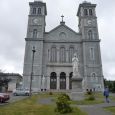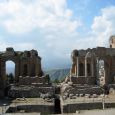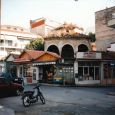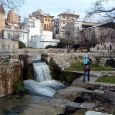Drama
Advertisement
By Air
You can travel to Kavala international airport and then catch a bus to Drama.
By Train
You can get a train from either Thessaloniki or Athens.Cost is cheaper than the bus.
By Car
With the now completed "Egnatia" freeway you can reach Drama in less then 2 hours from Thessaloniki and around 30 minutes from Kavala.
By Bus
You can take the KTEL (Greek national busservice) from Thessaloniki (around 2 hours, 15 euro) or Kavala.
By Ferry
The nearest harbour is Kavala, mainly serving the routes between Kavala-Thassos-Samothraki.
Agia Varvara Park
located on the north west of the main square walk around the area of the train station for some old houses and do see the "Kapnomagaza" (tobacco warehouses) in the east of the Agia Varvara park.Some of those are now being converted to museum buildings for exhibitions.In the north of the main square, around 30 minutes by foot there is a small hill that you can take a hike, on the top of the hill there is a coffee shop.On the east of the city there are a number of old churches, some with old decorations and paintings of byzantine style.
Archaeological Museum
Two exceptional works of art in copperThe Archaeological Museum of Drama covers human presence in the prefecture of Drama from the mid Paleolithic Period (50,000 years before present) with traces of life from Paleolithic hunts in the caves of the source of the Angitis, up to modern times (1913).The exhibition space consists of three main halls. In the first archaeological finds from the cave of Maara give witness to the presence of nomadic hunters in the area from the mid Palaeolithic period, while other finds show us about the life of settled farmers and animal rearers from Neolithic villages and the passage of the Copper Age in the city of Drama and the village of Sitagri. The reproduction of a Neolithic house with finds which describe the activities of Neolithic man and his daily activities is the main centre of interest for visitors of all ages.The visitor is taken through modem recent history by a photographic exhibition relating to the city of Drama, the towns of the prefecture and the mountain villages.The exhibition covers the period from the beginning of Turkish occupation up to the middle of the 19th century. In the third hall which is roofed with an atrium, the visitor can admire sculptures arranged into three thematic groups. The first includes architectural sculptures dating from ancient times up to Turkish occupation. The second contains votive monuments connected with the worship of various gods in the Greco-Roman pantheon as well as local deities, with particular reference to Dionysius while the third group of sculptures focuses on funerary monuments from Hellenistic and Roman times.
Ecclesiastical Museum
The history of the Christian Church in Drama began during the Byzantine period and underwent difficult and troubled times. From the 14th century when the city was captured by the Ottomans until the 20th century with successive foreign occupations, the Greek Orthodox Church in Drama struggled without end, fed by the blood of many faithful, martyrs to the faith and to the Hellenic ideal and provided succor to its followers through difficult periods.The collection of icons dating from Byzantine times to the 20th century forms the basic core of the museum's exhibits. The Museum of the Cathedral of Drama, founded during the reign of the honourable Bishop Dionysius 1st, is now housed in a recently restored five-storey wing of the Bishop of Drama's palace on Venizelou St. In the spacious and well-attended halls, ecclesiastical treasures of priceless spiritual and artistic value are on exhibition. The Icons of the Virgin Ηοdegetria and the Blessing Lord from the 13th century, icons from the 17th century and particularly from the 19th century decorate and sanctify the place. Moreover, the episcopal canonicals, holy vessels and their covers, many from the 19th century, relics of Chrysostomos of Drama and Smyrni, constitute the most important exhibits in the museum.
International Short Film Festival
This is one of the most significant events of the Short Film Festival in Drama.Having ascertained a serious deficiency in the distribution of short films in Greece, the Festival has decided to intervene in the distribution network.For the past six years, it has taken Greek short films on the road to many cities in Greece and Cyprus, but also to cities abroad with large Greek communities, for example, cities in Egypt and Germany.This event, known as “The Festival of Drama on the Road”, traveled to over 30 different cities this year.It is important to note that for many people, this is their first contact with cinema per se.Over the past few years, the Short Film Festival in Drama has set up a wide network of cooperation with older, but especially new, institutions, all of which are typical of what is most fresh and vital in the regional areas of Greece today.It is an arrangement that can only benefit all those concerned: cinema as an art form, the Greek short film, the city of Drama that supports the Festival and last but not least cultural decentralization.
Mount Falakro
is a mountain in northern Greece in the prefecture of Drama, Greece.A ski resort is available. It highest summit Profitis Ilias stands at 2232 meters above the sea level.The traditional Turkish name of the mountain is Bozdag ("gray mountain"), from where the Bulgarian name (Bozdag) stems; another Bulgarian name introduced during the Bulgarian rule of the region in World War II was Mramoritsa "marble mountain".
Information not available






